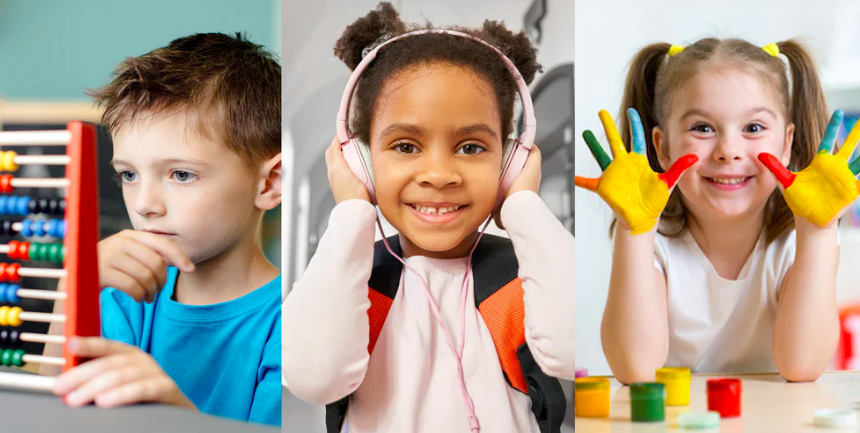Learning is a fundamental aspect of human development, and understanding how people learn can greatly enhance educational experiences. Different individuals have unique ways of processing information, known as learning styles. By identifying and catering to these styles, educators and learners can improve comprehension, retention, and overall academic success. This article delves into the various learning styles, their characteristics, and practical tips for optimizing learning based on each style.
The Concept of Learning Styles
Learning styles refer to the preferred way an individual absorbs, processes, comprehends, and retains information. While the concept has evolved over time, the most commonly recognized learning styles are visual, auditory, kinesthetic, and reading/writing. Each style has distinct features that influence how a person learns best.
Visual Learners
Characteristics:
-
Prefer to see information and visualize concepts.
-
Learn best through diagrams, charts, maps, and videos.
-
Often have a good sense of direction and spatial understanding.
Tips for Visual Learners:
-
Use Visual Aids: Incorporate graphs, charts, and illustrations into study materials.
-
Color Coding: Highlight key information with different colors to organize and prioritize.
-
Mind Mapping: Create mind maps to connect ideas and visualize relationships between concepts.
-
Watch Videos: Utilize educational videos and visual demonstrations to enhance understanding.
Auditory Learners
Characteristics:
-
Learn best through listening and verbal communication.
-
Prefer lectures, discussions, and audio recordings.
-
Often excel in language-based activities and musical tasks.
Tips for Auditory Learners:
-
Participate in Discussions: Engage in group discussions and verbal exchanges to reinforce learning.
-
Record Lectures: Listen to recorded lectures and discussions for review.
-
Read Aloud: Read study materials aloud to enhance retention.
-
Use Mnemonics: Employ mnemonic devices and rhymes to memorize information.
Kinesthetic Learners
Characteristics:
-
Learn best through hands-on experiences and physical activities.
-
Prefer engaging in experiments, role-playing, and real-world applications.
-
Often excel in activities requiring coordination and physical skills.
Tips for Kinesthetic Learners:
-
Engage in Experiments: Participate in labs and practical experiments to apply concepts.
-
Use Physical Movement: Incorporate movement into study sessions, such as walking while reviewing notes.
-
Role-Play: Act out scenarios or concepts to understand them better.
-
Take Breaks: Take frequent breaks to avoid sitting for long periods, enhancing focus and energy.
Reading/Writing Learners
Characteristics:
-
Prefer to learn through reading and writing activities.
-
Excel in tasks involving note-taking, reading books, and writing essays.
-
Often have strong comprehension and analytical skills.
Tips for Reading/Writing Learners:
-
Take Detailed Notes: Write comprehensive notes during lectures and while reading.
-
Create Lists: Use lists, headings, and bullet points to organize information.
-
Write Summaries: Summarize information in your own words to reinforce understanding.
-
Read Extensively: Engage with a variety of texts to broaden knowledge and perspectives.
Combining Learning Styles
It's important to note that most people do not fit neatly into a single learning style. Many individuals have a combination of learning preferences, and their dominant style can vary depending on the subject or context. Recognizing this, a multimodal approach to learning can be highly effective.
Tips for a Multimodal Approach:
-
Blend Techniques: Combine visual, auditory, kinesthetic, and reading/writing strategies to create a rich learning experience.
-
Adapt to Context: Adjust learning techniques based on the specific subject matter and learning environment.
-
Stay Flexible: Be open to experimenting with different methods to discover what works best for each individual.
The VARK Model
One popular framework for understanding learning styles is the VARK model, developed by Neil Fleming. VARK stands for Visual, Auditory, Reading/Writing, and Kinesthetic. This model provides a practical way to assess and address individual learning preferences.
Using the VARK Model:
-
Identify Preferences: Take a VARK questionnaire to determine your dominant learning style(s).
-
Tailor Study Habits: Adapt study techniques based on the identified preferences.
-
Seek Resources: Utilize resources that align with your learning style, such as visual aids, audiobooks, hands-on projects, or comprehensive texts.
The Importance of Understanding Learning Styles
Understanding learning styles is crucial for both educators and learners. For educators, it allows the design of more effective and inclusive teaching strategies that cater to diverse student needs. For learners, it fosters self-awareness and empowers them to take control of their educational journey.
Benefits of Understanding Learning Styles:
-
Improved Retention: Tailoring learning methods to individual preferences enhances memory and retention.
-
Increased Engagement: Engaging with material in a preferred way boosts motivation and interest.
-
Enhanced Performance: Optimized learning strategies lead to better academic performance and deeper understanding.
Conclusion
Recognizing and understanding different learning styles can transform the educational experience, making it more personalized and effective. Whether you're a visual, auditory, kinesthetic, or reading/writing learner, there are strategies to help you succeed. By adopting a multimodal approach and staying adaptable, you can optimize your learning and achieve your educational goals. Embrace your unique learning style, and use it to unlock your full potential.



add comment
please login to add or edit your comment
login nowpost comments
no comments added yet!